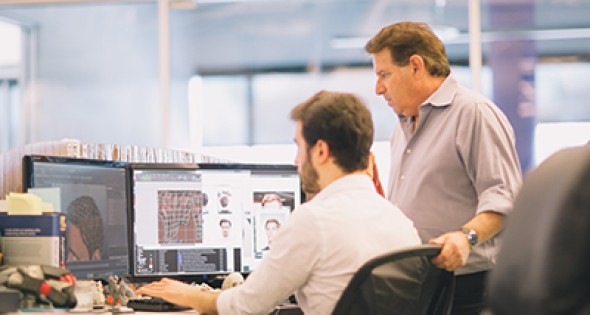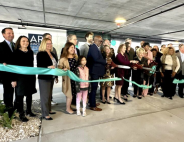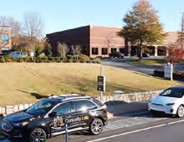
Workforce Challenges Continue As Top Priority For Manufacturing
19 Sep, 2016
Outgoing baby boomers are making way for a new generation of workers who have become more selective in what they want to do
By David Hodes
The knowledge economy is changing what is learned, how it is taught and who is teaching it as the old-school methods of industry training are slowly but surely failing to keep pace.
It seems like every industry, every job, is becoming high tech, or has become blended with high tech components, more and more each year.
The new and emerging high tech manufacturing businesses, particularly in automotive and aerospace, are looking for a workforce that today is getting spread out over many other industries because using information technology and data analytics has become one of the more critical core jobs in companies across the globe. Jobs that once did not require that knowledge base now have evolved to embrace it.
Along with that heightened need for and use of tech/IT training, potential employers have to deal with the challenges that come with broader choices for a worker. If they have a background in computer coding or engineering, now almost every industry in the country could hire them.
Kristen Fyfe-Mills, senior manager of communications for the Association for Talent Development (ATD), is helping employers ride the cusp of that trend. At a workforce conference in Buffalo, New York, she discussed the changing landscape of publishing.
“The same job in designing an ad for a newspaper today requires you to know InDesign and AfterEffects in Adobe, and whether that ad is not only going to be printed in a newspaper but also has to go online and be web capable and mobility responsive and all of those things,” she says. “The kind of skills in demand today are totally different than they were years ago.”
The new trade schools are the community colleges in many communities today, collaborating with businesses or industries in their area.
“Both industry and the colleges are trying to figure this workforce shortage thing out,” she says. “They say we have jobs that need to be filled. We have people that need jobs. And there are smart people that don’t have opportunities simply because of where they live or where they go to school. How do we build a bridge and start a conversation in places where we haven’t done that before?” That is what organizations like the ATD are helping to do, she says.
With the reality today of almost every student having in their pocket a smart phone with the world’s knowledge, the learning and training experience is changing.
“We talk a lot about the multi-generations in the workforce,” Fyfe-Mills says. “There are a lot of people who prefer to learn in a typical classroom environment. And there are others who prefer to use their mobile device. But the learning needs to happen if the organization is to meets its objectives,” she says. “That is the driver for our organization – assessing what the organization needs, what the employees need and frankly, what the senior leaders are willing to support when it comes to training.”
Addressing the critical shortage situation
It’s well known that many areas of the country considered traditional manufacturing enclaves are experiencing a shortage of workers – and in some cases, that situation has become critical.
To help counter that trend in northern California, for example, where there is an acute shortage of young people wanting to get into manufacturing, economic developers and workforce trainers created a road show where they went into high schools and made presentations from leading companies in the area, and offered the perspective of a great manufacturing career to students and their parents.
“Students would sign up to apply for internships, present their resumes and go through a professional interview to help understand the full process of getting hired,” Doug Kirkpatrick, an organizational change consultant on the board of directors for the ATD, says. “They found out that a manufacturing career can be fantastic. They can offer the best paying jobs in a given geographic region, and they may be a superb alternative than simply going to college – which is the message that they had been getting until they learned about manufacturing.”
The message about millennials
One of the issues that all workforce developers need to address is the wants and needs of millennials. “They have a different mindset,” Kirkpatrick says. “They are bringing different sensibilities to work. They don’t have the patience or the same approach to work that baby boomers have had.”
A survey about millennials, “The Deloitte Millennial Survey 2016,” showed that millennials are now the biggest segment of the American workforce.
One of the key findings of the report is that millennials already have one foot out the door when they get hired, and that 44 percent said that they would leave within two years if they could. They often cite lack of development opportunities. They want more flexibility in their roles. They are not willing to enter a business and pay their dues for years doing trivial administrative work while waiting for a shot at more money and a better title.
“As employers, we ignore their attitudes and their values and their beliefs to our peril,” Kirkpatrick says. “It really is an existential issue for the future.”
But they do have some of the same needs that baby boomers have, the report found. They still want to own a home and they still want to save money for retirement.
“But if they get the slightest hint that they are not being supported in these goals, they will get out the door as soon as possible,” Kirkpatrick says. “So it is really crucial for companies to understand the millennial mindset because it really is a survival issue for the future.”
Florida’s pitch
CareerSource Florida, Inc., the non-profit public-private statewide workforce policy and investment board that oversees 24 local workforce development boards and 100 career centers throughout Florida, consider themselves a workforce network that thrives on change.
“You have to be flexible because things are always changing,” says Andra Cornelius, senior vice president for business and workforce development for CareerSource Florida, Inc. “When you think about that kind of recruit-then-hire-then-train scenario today, it’s almost like you have to do a wash-then-rise-then-repeat cycle. It is never one and done.”
She says the legacy business in Florida – aerospace and aviation – is where they have to be the most nimble to help replace the exiting baby boomers.
“We have seen a lot of growth in our aviation and aerospace manufacturing in Florida, and we have put in place career technical programs that give certifications to high school students,” she says. “State colleges also make certifications available that are needed by the industry. That certification cycle goes on up the food chain all the way to higher level university programs.”
One case where new training and certification was needed for the Florida aerospace industry was when the shuttle program was closed down after the last flight of the shuttle, the Atlantis, STS-135, on July 21, 2011. There were many aerospace engineers looking for work.
“We found that many of the skill sets associated with the shuttle were antiquated,” Cornelius says. “They were used to doing one type of job, like quality assurance, that was specific to the shuttle.”
That need to stay flexible and agile is echoed by Chris Hart, the president and CEO of CareerSource Florida, who talks about how technology has changed other industries that now require some of the same training as other industries which have been typically tech-dependent. “We sat down with CEOs in the life sciences space and had a conversation with them,” he says. “It became abundantly clear that they had moved from this life science health care perspective very deeply into information management technology. So we had expected to talk to them about the skill set that they needed in the health care industry but ended up spending most of our time talking about the need for computer science and computer engineers and the blending of those skill sets in health care.”
To help them understand workforce in today’s economy, CareerSource created a data analytics unit with their economic statistician, investing in tools that allow them to spider out and find job opportunities to fit with the appropriate talent.
“This tool allowed us to use supply/demand gap analysis a little bit differently,” Hart says. “A lot of the traditional methods for showing talent to a business that wants to come to an area doesn’t take into account the fact that a high tech IT engineer for a Boeing or a Lockheed Martin may be the one that a hospital needs. The old methodology just showed a one to one assessment – engineers go to aerospace, for example.”
Tennessee takes their turn
Tennessee also created a workforce program – the Drive to 55 Alliance, an alliance of private sector partners, leaders and non-profits working together in support of the state’s Drive to 55 initiative to equip 55 percent of Tennesseans with a college degree or certificate by 2025. It’s free, with the tuition paid by the state.

The CareerSource Florida network helped recruit, hire and train employees at sportody of Gainesville, the world’s largest online review network for outdoor sports. The director of finance and analytics says the assistance provided has helped his company, based in Gainesville, Fla., competitive salaries, acquiring qualified workers and providing training opportunities. Courtesy of CareerSource Florida
With that in place, economic developers and state business leaders are ramping up their career and technical education (CTE) in K through 12 schools with some shifting priorities in training. “We have always had training in agriculture and cosmetology and marketing,” Sharon Shanks, workforce development manager for the Knoxville Chamber of Commerce, says. “But our science, technology engineering and math (STEM) pathways have really been the main focus simply because of all of the manufacturing opportunities here in our region.”
Shanks, with a background in education, sees where the workforce and industry need to be to understand and meet demand. “I find the awareness piece to be the most critical,” she says. “That is what we are lacking in the community – that awareness to the opportunities that are out there for our workforce.”
She says that they mine down as far as middle schools with their workforce efforts so that students know which pathway they want to take by the time they get to high school.
“Are they college bound? Are they really equipped to know and do something that may not even be a passion of theirs? Or is it that they may not know what to do?” Shanks says. “That’s what they can find out when they sort of experiment with the CTE program.”
This June, the Knoxville Chamber had an educators in the workforce program, where 30 manufacturing companies offered tours of their facilities to 500-plus educators from the region. “These educators may not be able to change curriculum immediately based on what they saw, but they can advise the kids on soft skills right now,” Shanks says. “Those skills include going to work on time, dressing appropriately and communicating well. They are a big part of someone succeeding in the workplace.”
What needs to happen now
Fyfe-Mills says that she thinks there has to be a shift in education away from what is a traditional industrial age mentality about learning.
“Kids need to know how to be competitive and effective in the workplace but also need to be people who can innovate at a time where innovation and change is just rampant,” she says. “Employers need to start going into schools or start to influence boards of education to let them know that we need more focus on STEM literacy not at the expense of art but at the expense of calculus. Can we teach kids to code, or how can we do code instead of trigonometry? It might not be either or it might be both. But that thinking is going to require a big shift away from what traditional education has been.”
More details:
– careersourceflorida.com
– knoxvillechamber.com
– td.org
Related Posts
-

Pinellas County, Florida Celebrates Ribbon Cutting of the ARK Innovation Center Business Incubator
-

Time To “Pivot, Stretch, And Adapt”
-

More Efficient Agriculture Techniques are Coming into the Focus
-

Logistics Getting on a Quicker, more Focused Track
-

Opportunity Zones and Post-COVID-19 Economic Recovery
-

New Ideas Emerge for Both Sustainable and Fossil Fuel Technologies
-

New Goals and New Internet Tech Help Build Base for Advanced Manufacturing
-

Business Services Today Focus on Human Resources, Data Analytics
-

Ready to Shift into High Gear
-

The New Forestry Momentum










